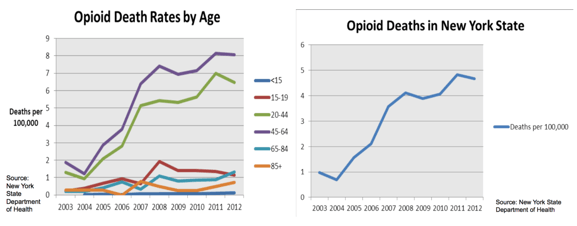 Did you know that since 1999, the number of prescription painkillers sold in the United States has quadrupled, but a similar increase has not been noticed in the number of Americans reporting pain? America has a big problem on its hands with the number of deaths that occur every year from prescription painkillers. According to the Centers for Disease Control and Prevention, 44 Americans die every day from an overdose of prescription painkillers. The most common are opioids, such as Oxycontin (oxycodone), Vicodin (hydrocodone), and methadone.
Did you know that since 1999, the number of prescription painkillers sold in the United States has quadrupled, but a similar increase has not been noticed in the number of Americans reporting pain? America has a big problem on its hands with the number of deaths that occur every year from prescription painkillers. According to the Centers for Disease Control and Prevention, 44 Americans die every day from an overdose of prescription painkillers. The most common are opioids, such as Oxycontin (oxycodone), Vicodin (hydrocodone), and methadone.
Many states have recently begun efforts to improve the safety of and strengthen regulations regarding prescription drug use. For instance, New York passed the Internet System for Tracking Over-Prescribing (I-STOP) law, which was an effort to improve Prescription Monitoring Programs (PMPs) in the State of New York. Here is some of the data that led to the need for such efforts (sourced from Terence O’Leary of the Bureau of Narcotic Enforcement):

I-STOP legislation has been in effect for a couple of years now, but there is one important change coming up for New York physicians: mandatory ePrescription beginning in March 2016. What are some of the benefits of e-prescribing, and how can it affect abuse and misuse of prescription drugs?
- Physicians will have access to a patient’s medication history at the point of care, which provides some invaluable context regarding the risks of adverse drug effects. By seeing which medications the patient is currently or has recently taken, a prescribing physician can help avoid issuing drugs that are contraindicated or can possibly cause fatal reactions.
- Updated PMPs will also help to prevent “doctor-shopping.” This is the practice of visiting more than one doctor to obtain prescriptions for a variety of drugs, which are then used to supply drug addicts or sell the drugs on the market. Sometimes, the doctor shoppers are addicts themselves.
- Lastly, e-prescribing is more secure than paper prescribing. Prescription pads can be stolen, tampered with, or otherwise altered, and those vulnerabilities are decreased through e-prescribing.
Although I-STOP has been in effect for a while now, the mandatory electronic prescription clause will kick in next month. While many New York physicians are already prescribing controlled substances this way, some are not quite prepared. It is possible to obtain a waiver and continue paper prescriptions, but this is not in the best interests of your practice, your patients, or your physicians. Is your private medical practice ready for I-STOP?



